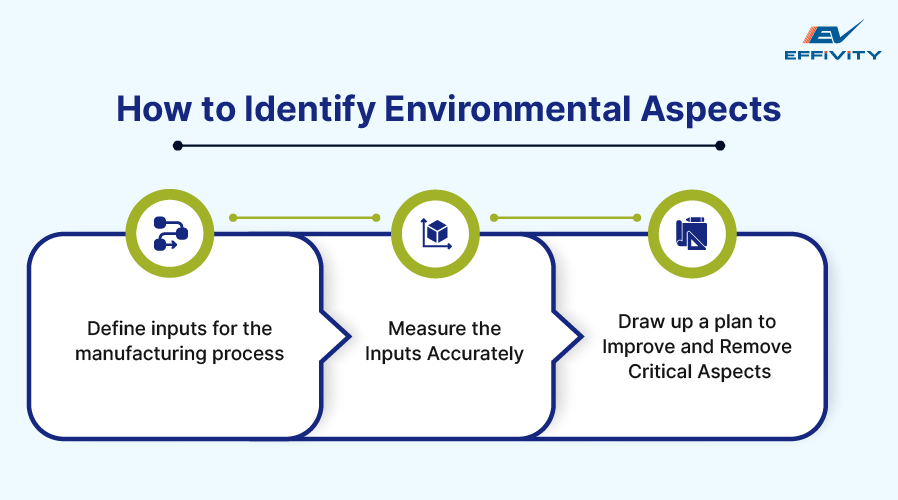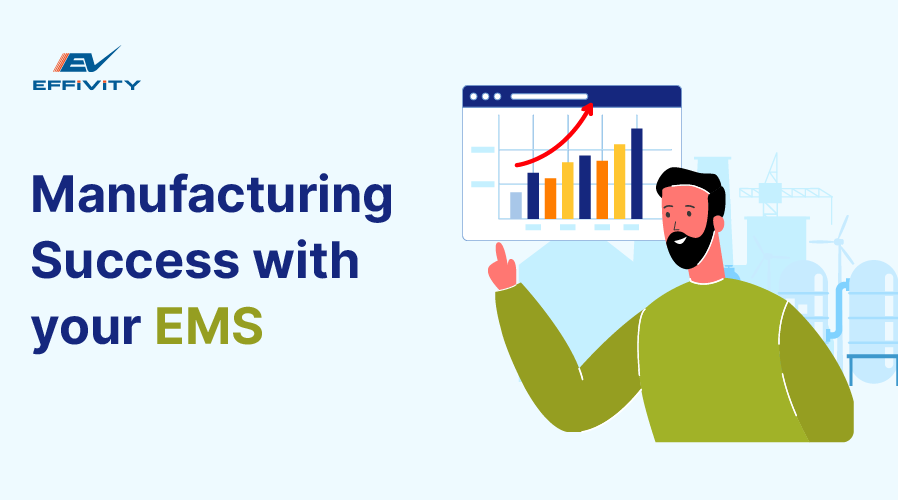The benefits of implementing ISO 14001 standards in your manufacturing business are manyfold: quality assurance, improvement in environmental performance, reduced environmental impact, and boost operational efficiency.
Not to forget, the financial benefits are substantial with efficient resource allocation, cost savings, and effective waste management. Most of all, it gives you peace of mind that you have implemented strong environmental control measures to comply with international standards.
But how do you implement EMS specific to your manufacturing business? Fortunately, the ISO 14001 standard has been designed and written in a way that can be applied to organizations in all sectors and deliver benefits irrespective of which sector your company works in.
However, first, it is important to identify the critical environmental aspects relevant to the manufacturing industry and take steps to reduce them. Only then you will be able to realize greater benefits from your environmental management system.
How? Let’s understand.
What is an environmental aspect?
An environmental aspect under the ISO 14001 standard is an element of your business activity, product, or service that can impact or does impact the environment.
In simpler terms, any activity, product, service, or element of it that interacts with the environment and has an impact on it – both positive and negative, is an environmental aspect.
For instance, within the manufacturing process, storing fuel in an above or underground tank might potentially leak or spill, which can lead to water and soil pollution (the pollution is the environmental impact.)
Why Do You Need to Identify Environmental Aspects?
The ISO 14001:2015 standard requires organizations to identify and evaluate environmentally critical aspects by considering the inputs and outputs of all operations under the scope of the EMS. The goal is to determine which environmental aspects can cause a serious impact on the environment and must, therefore, be controlled by the EMS.
You must evaluate the environmental aspects based on their impact and your ability to control them proactively to minimize issues. Prioritizing different aspects and taking action to reduce them is important to achieve continual improvement and environmental efficiency within the organization.
In the 2015 version of ISO 14001, there is increased emphasis on risk management, which also includes risks that could affect the environment. The ISO 14001:2015 standard also requires increased participation from the top management team with respect to the identification and mitigation of risk to the company.
If you develop an environmental management system to handle the environmental aspects described above, you will be in good shape to benefit both your bottom line and minimize your impact on our planet.
How to Identify Aspects of a Manufacturing Business?
In the manufacturing industry, many aspects can influence the environmental performance of the business. No matter the business or industry, every action that you and your team take – even down to the act of commuting to work and whether you use public or private transportation to do so – impacts the environment in some way.
Then, it will be safe to assume that for your manufacturing business, the number and significance of critical environmental aspects will be far greater. As a result, identifying such aspects is an important starting point, one that requires you to

1. Create a detailed list of all the inputs involved in your manufacturing process. These include raw materials, utility costs, electricity consumption, packaging costs, travel, and every other thing that can have an environmental impact.
2. The next step is to measure the inputs accurately. Since a fundamental concept in all ISO standards, including ISO 14001, is continual improvement, it is vital that you know the exact details of the manufacturing process inputs from the beginning.
3. Once you know which environmental aspects in your manufacturing process are important and controllable, draw up a plan to either improve or remove these aspects. The plan should include when and how the aspects will be assessed and ensure that both your objectives and performance standards are accurately communicated to all your employees.
What are the Next Steps?
Once you have identified your major environmental aspects, you need to implement relevant measures to reduce their environmental impact. Further, you need to work continuously to manage the company’s effect on the environment.
For this, use a comprehensive review process to make sure that the steps you take are effective. However, that’s not all you need to do to identify and manage the various environmental aspects.
Internal audits are crucial to drive improvements in the organization. Within the EMS, too, internal audits can help you identify impacts and aspects that you might have overlooked and scrutinize your current processes to find further improvement opportunities.
For instance, in a manufacturing company that was implementing ISO 14001, an internal audit team observed the following:
1. The company was trying to achieve economies of scale by reducing the quantity of cardboard used in shipping manufactured products.
However, significant additional savings could be achieved if mixed incoming packaging was used to fill the gaps in the boxes that contained the products. This would result in the continuous recycling of packaging material, reducing the environmental aspect while creating significant cost savings.
2. An internal audit team at a medium-sized electronics company found that by analyzing scrap, instead of purchasing new parts, a certain process will allow the recovery of expensive ball grid array chips with a success rate of 95%. This new process saved up to $12,000 per year, and it soon became an industry standard throughout the world.
These savings would not have been possible if the organization had not identified risks, reviewed processes, and conducted internal audits of the environmental aspects and performance. Generally, environmental improvements are achieved by improving processes and reducing consumables, waste, and energy. This benefits both the environment and the manufacturing company’s bottom line.
The process – which involves identifying, assessing, and measuring the environmental aspects, setting objectives, initiating plans to improve the aspects, and conducting internal audits to identify new aspects and improve the existing ones – is the “Plan, Check, Do, Act” cycle.
This cycle is at the very heart of any ISO standard. We have also committed to this by using the review and audit processes to ensure that our environmental performance continually improves.
In Conclusion
For your manufacturing business, identifying and reducing the environmental aspects is just the beginning of a long and complex process of managing EMS. It sets the stage for environmental efficiency within your organization and allows you to achieve compliance with the ISO 14001:2015 standard.






























